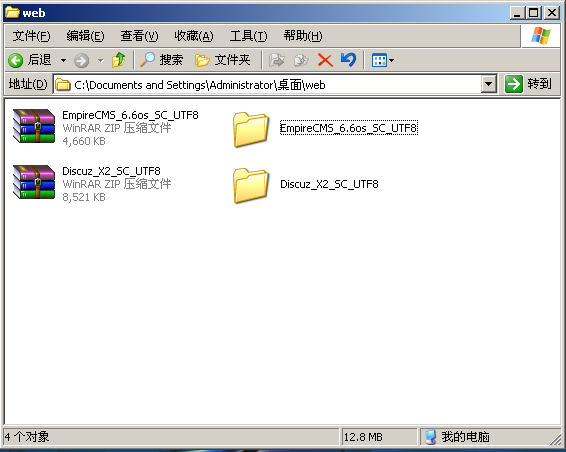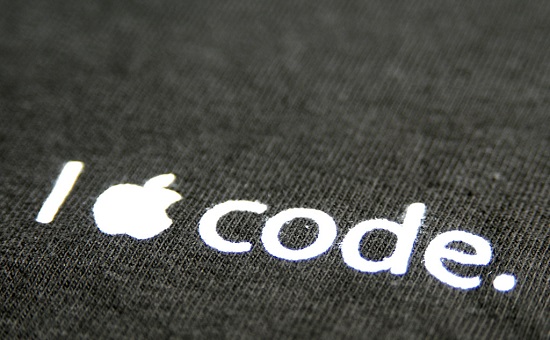Android输入事件0: 底层初始化与读取和分发
启动
# 初始化
Android中所有的系统Service都是在SystemServer中启动和管理的。其中InputManagerService也不例外。
在SystemServer的run方法中将InputManagerService放到startOtherServices函数中运行。如下:
// frameworks/base/services/java/com/android/server/SystemServer.java
/** The main entry point from zygote. */
public static void main(String[] args) {
new SystemServer().run();
}
private void run() {
...
traceBeginAndSlog("StartServices");
startBootstrapServices();
startCoreServices();
startOtherServices();
SystemServerInitThreadPool.shutdown();
...
}
private void startOtherServices() {
...
inputManager = new InputManagerService(context);
...
inputManager.setWindowManagerCallbacks(wm.getInputMonitor());
inputManager.start();
}
可以看到 startOtherServices()
中实例化了一个 InputManagerService
对象inputManager,后面执行了inputManager的start()方法。
注意: InputManagerService内部的mWindowManagerCallbacks来自 wm.getInputMonitor()
。
先来看看 InputManagerService
的构造函数:
// frameworks/base/services/core/java/com/android/server/input/InputManagerService.java
public InputManagerService(Context context) {
...
mPtr = nativeInit(this, mContext, mHandler.getLooper().getQueue());
...
LocalServices.addService(InputManagerInternal.class, new LocalService());
}
InputManagerService
构造函数直接带着当前的context以及MessageQueue运行到jni层对应的nativeInit函数:
// frameworks/base/services/core/jni/com_android_server_intput_InputManagerService.cpp
static jlong nativeInit(JNIEnv* env, jclass /* clazz */,
jobject serviceObj, jobject contextObj, jobject messageQueueObj) {
sp<MessageQueue> messageQueue = android_os_MessageQueue_getMessageQueue(env, messageQueueObj);
...
NativeInputManager* im = new NativeInputManager(contextObj, serviceObj,
messageQueue->getLooper());
im->incStrong(0);
return reinterpret_cast<jlong>(im);
}
jni层会创建一个NativeInputManager的c++对象,获取其内存地址并转化成jlong,交给InputManagerService的java层引用。
而NativeInputManager的构造函数同时也会实例化并持有一个InputManager的c++对象:
// frameworks/base/services/core/jni/com_android_server_intput_InputManagerService.cpp
NativeInputManager::NativeInputManager(jobject contextObj,
jobject serviceObj, const sp<Looper>& looper) :
mLooper(looper), mInteractive(true) {
JNIEnv* env = jniEnv();
...
sp<EventHub> eventHub = new EventHub();
mInputManager = new InputManager(eventHub, this, this);
}
而在InputManager内部会分别创建一个 InputDispatcher
和 InputReader
,及分别持有他们的对应的线程: InputDispatcherThread
和 InputReaderThread
。
// frameworks/native/services/inputflinger/InputManager.cpp
InputManager::InputManager(
const sp<EventHubInterface>& eventHub,
const sp<InputReaderPolicyInterface>& readerPolicy,
const sp<InputDispatcherPolicyInterface>& dispatcherPolicy) {
mDispatcher = new InputDispatcher(dispatcherPolicy);
mReader = new InputReader(eventHub, readerPolicy, mDispatcher);
initialize();
}
void InputManager::initialize() {
mReaderThread = new InputReaderThread(mReader);
mDispatcherThread = new InputDispatcherThread(mDispatcher);
}
其中:
-
InputReader:用于读取输入事件,并将其发送给InputDispatcher。
-
InputDispatcher:用于接收InputReader发来的输入事件,并将输入事件通过InputChannel的Server发送给Client,并在Client的handleEvent中发送到java层的InputEventReceiver。
# (Native)InputManager启动
SystemServer启动之后在startOtherServices()实例化InputManagerService,紧接着之后在这个方法里面调用InputManagerService的start()方法:
// frameworks/base/services/core/java/com/android/server/input/InputManagerService.java
public void start() {
nativeStart(mPtr);
...
}
之后来到jni层com_android_server_intput_InputManagerService.cpp的 nativeStart
方法:
// frameworks/base/services/core/jni/com_android_server_intput_InputManagerService.cpp
static void nativeStart(JNIEnv* env, jclass /* clazz */, jlong ptr) {
NativeInputManager* im = reinterpret_cast<NativeInputManager*>(ptr);
status_t result = im->getInputManager()->start();
...
}
这里会将ptr转化为NativeInputManager(即InputManagerService.java的jni实现)获取并启动InputManager.cpp,即调用 start()
方法。
// frameworks/native/services/inputflinger/InputManager.cpp
status_t InputManager::start() {
status_t result = mDispatcherThread->run("InputDispatcher", PRIORITY_URGENT_DISPLAY);
...
result = mReaderThread->run("InputReader", PRIORITY_URGENT_DISPLAY);
...
return OK;
}
这里会分别启动 InputDispatcherThread
和 InputReaderThread
线程,让InputDispatcher和InputReader工作。
# InputManagerService启动过程总结
- 在SystemServer初始化时实例化InputManagerService。
- InputManagerService构造函数创建jni层的NativeInputManager。
- NativeInputManager里创建了InputManager。
- InputManager创建InputDispather和InputReader的实例,及InputReaderThread和InputDispatherThread。
- 最后SystemServer启动InputManagerService及对应nativeStart,将InputDispatherThread和InputReaderThread启动。实现对输入设备的读取和分发。
Native读取输入事件(InputReader)
这里的逻辑特别多,简单说。
// frameworks/native/services/inputflinger/InputReader.cpp
bool InputReaderThread::threadLoop() {
mReader->loopOnce();
return true;
}
每次InputReader线程都会调用 InputReader::loopOnce()
读取输入流,并flush到QueueInputListener。而QueueInputListener会持有上面构造函数的InputDispatcher。
loopOnce
如下:
// frameworks/native/services/inputflinger/InputReader.cpp
void InputReader::loopOnce() {
size_t count = mEventHub->getEvents(timeoutMillis, mEventBuffer, EVENT_BUFFER_SIZE);
{ // acquire lock
AutoMutex _l(mLock);
mReaderIsAliveCondition.broadcast();
if (count) {
processEventsLocked(mEventBuffer, count);
}
...
} // release lock
...
mQueuedListener->flush();
}
# EventHub
getEvents
函数会去/dev/input目录下面去找当前的输入设备。之后读取其内容,并解析成RawEvents。
# 处理原始事件(RawEvent)
// frameworks/native/services/inputflinger/InputReader.cpp
void InputReader::processEventsLocked(const RawEvent* rawEvents, size_t count) {
for (const RawEvent* rawEvent = rawEvents; count;) {
int32_t type = rawEvent->type;
size_t batchSize = 1;
if (type < EventHubInterface::FIRST_SYNTHETIC_EVENT) {
...
processEventsForDeviceLocked(deviceId, rawEvent, batchSize);
} else {
switch (rawEvent->type) {
case EventHubInterface::DEVICE_ADDED:
addDeviceLocked(rawEvent->when, rawEvent->deviceId);
break;
case EventHubInterface::DEVICE_REMOVED:
removeDeviceLocked(rawEvent->when, rawEvent->deviceId);
break;
case EventHubInterface::FINISHED_DEVICE_SCAN:
handleConfigurationChangedLocked(rawEvent->when);
break;
...
}
}
- 添加设备(addDeviceLocked):
通过classes(类似于flag),确定device支持的类型。在这里Device对于输入方式/类型的支持叫做Mapper,可以理解成不同的映射。
比如:
KeyboardInputMapper MultiTouchInputMapper SingleTouchInputMapper CursorInputMapper
具体见: createDeviceLocked
函数。
- processEventsForDeviceLocked
这里是device处理原始输入事件的地方。这里的直接逻辑很简单:
// frameworks/native/services/inputflinger/InputReader.cpp
void InputReader::processEventsForDeviceLocked(int32_t deviceId,
const RawEvent* rawEvents, size_t count) {
...
InputDevice* device = mDevices.valueAt(deviceIndex);
...
device->process(rawEvents, count);
}
void InputDevice::process(const RawEvent* rawEvents, size_t count) {
...
size_t numMappers = mMappers.size();
for (const RawEvent* rawEvent = rawEvents; count--; rawEvent++) {
...
} else {
for (size_t i = 0; i < numMappers; i++) {
InputMapper* mapper = mMappers[i];
mapper->process(rawEvent);
}
}
}
}
遍历其中所有的Mapper,并调用每个Mapper的process函数。
以 KeyboardInputMapper
为例:
// frameworks/native/services/inputflinger/InputReader.cpp
void KeyboardInputMapper::process(const RawEvent* rawEvent) {
switch (rawEvent->type) {
case EV_KEY: {
int32_t scanCode = rawEvent->code;
int32_t usageCode = mCurrentHidUsage;
mCurrentHidUsage = 0;
if (isKeyboardOrGamepadKey(scanCode)) {
processKey(rawEvent->when, rawEvent->value != 0, scanCode, usageCode);
}
break;
}
...
}
bool KeyboardInputMapper::isKeyboardOrGamepadKey(int32_t scanCode) {
return scanCode < BTN_MOUSE
|| scanCode >= KEY_OK
|| (scanCode >= BTN_MISC && scanCode < BTN_MOUSE)
|| (scanCode >= BTN_JOYSTICK && scanCode < BTN_DIGI);
}
如果是Keyboard或者Gamepad则进入 processKey
函数:
// frameworks/native/services/inputflinger/InputReader.cpp
void KeyboardInputMapper::processKey(nsecs_t when, bool down, int32_t scanCode,
int32_t usageCode) {
int32_t keyCode;
int32_t keyMetaState;
uint32_t policyFlags;
if (getEventHub()->mapKey(getDeviceId(), scanCode, usageCode, mMetaState,
&keyCode, &keyMetaState, &policyFlags)) {
keyCode = AKEYCODE_UNKNOWN;
keyMetaState = mMetaState;
policyFlags = 0;
}
if (down) {
// Rotate key codes according to orientation if needed.
if (mParameters.orientationAware && mParameters.hasAssociatedDisplay) {
keyCode = rotateKeyCode(keyCode, mOrientation);
}
// Add key down.
ssize_t keyDownIndex = findKeyDown(scanCode);
if (keyDownIndex >= 0) {
// key repeat, be sure to use same keycode as before in case of rotation
keyCode = mKeyDowns.itemAt(keyDownIndex).keyCode;
} else {
// key down
if ((policyFlags & POLICY_FLAG_VIRTUAL)
&& mContext->shouldDropVirtualKey(when,
getDevice(), keyCode, scanCode)) {
return;
}
if (policyFlags & POLICY_FLAG_GESTURE) {
mDevice->cancelTouch(when);
}
mKeyDowns.push();
KeyDown& keyDown = mKeyDowns.editTop();
keyDown.keyCode = keyCode;
keyDown.scanCode = scanCode;
}
mDownTime = when;
} else {
// Remove key down.
ssize_t keyDownIndex = findKeyDown(scanCode);
if (keyDownIndex >= 0) {
// key up, be sure to use same keycode as before in case of rotation
keyCode = mKeyDowns.itemAt(keyDownIndex).keyCode;
mKeyDowns.removeAt(size_t(keyDownIndex));
} else {
...
return;
}
}
...
if (down && getDevice()->isExternal() && !isMediaKey(keyCode)) {
policyFlags |= POLICY_FLAG_WAKE;
}
if (mParameters.handlesKeyRepeat) {
policyFlags |= POLICY_FLAG_DISABLE_KEY_REPEAT;
}
NotifyKeyArgs args(when, getDeviceId(), mSource, policyFlags,
down ? AKEY_EVENT_ACTION_DOWN : AKEY_EVENT_ACTION_UP,
AKEY_EVENT_FLAG_FROM_SYSTEM, keyCode, scanCode, keyMetaState, downTime);
getListener()->notifyKey(&args);
}
前面的逻辑是将所有的输入事件的down行为全部缓存起来的,从而记录当前所有正在发生的事件。
基于RawEvent的各种信息包括when/keyCode/mSource等创建一个 NotifyKeyArgs
。最终调用 QueueInputListener
的 notifyKey
将当前的操作放入其内部的队列(mArgsQueue)中,等待flush。
# QueueInputListener
下面来看看最终是如何flush到InputDispather中去的。
flush函数:
// frameworks/native/services/inputflinger/QueuedInputListener.cpp
void QueuedInputListener::notifyKey(const NotifyKeyArgs* args) {
mArgsQueue.push(new NotifyKeyArgs(*args));
}
void QueuedInputListener::notifyMotion(const NotifyMotionArgs* args) {
mArgsQueue.push(new NotifyMotionArgs(*args));
}
void QueuedInputListener::flush() {
size_t count = mArgsQueue.size();
for (size_t i = 0; i < count; i++) {
NotifyArgs* args = mArgsQueue[i];
args->notify(mInnerListener);
delete args;
}
mArgsQueue.clear();
}
这里分别调用queue中每一个NotifyArgs的notify函数, 其中的mInnerListener就是InputDispatcher。还是以上面的NotifyKeyArgs为例。
// frameworks/native/services/inputflinger/QueuedInputListener.cpp
void NotifyKeyArgs::notify(const sp<InputListenerInterface>& listener) const {
listener->notifyKey(this);
}
可以看到NotifyKeyArgs最近进入了listener( InputDispatcher
: InputListenerInterface
)的 notifyKey
函数。
# 加入InputDispatcher队列
以KeyEvent为例, 下来进入InputDispatcher的notifyKey函数:
// frameworks/native/services/inputflinger/InputDispatcher.cpp
void InputDispatcher::notifyKey(const NotifyKeyArgs* args) {
...
KeyEvent event;
event.initialize(args->deviceId, args->source, args->action,
flags, keyCode, args->scanCode, metaState, 0,
args->downTime, args->eventTime);
mPolicy->interceptKeyBeforeQueueing(&event, /*byref*/ policyFlags);
bool needWake;
{ // acquire lock
mLock.lock();
if (shouldSendKeyToInputFilterLocked(args)) {
mLock.unlock();
policyFlags |= POLICY_FLAG_FILTERED;
if (!mPolicy->filterInputEvent(&event, policyFlags)) {
return; // event was consumed by the filter
}
mLock.lock();
}
int32_t repeatCount = 0;
KeyEntry* newEntry = new KeyEntry(args->eventTime,
args->deviceId, args->source, policyFlags,
args->action, flags, keyCode, args->scanCode,
metaState, repeatCount, args->downTime);
needWake = enqueueInboundEventLocked(newEntry);
mLock.unlock();
} // release lock
if (needWake) {
mLooper->wake();
}
}
这里一开始会交由Java层InputManagerService的 interceptKeyBeforeQueueing
函数处理,用于拦截某些系统行为。
不被拦截的输入事件则通过 enqueueInboundEventLocked
加入到 mInboundQueue
的队尾。
之后唤起Looper,进入InputDispatcher的分发环节。
- 拦截输入事件(interceptKeyBeforeQueueing)
这一步需要将NotifyKeyArgs转化成KeyEvent,因为接下来需要交给Java层处理。经过这里拦截的事件,都不会进入到InputDispatcher的队列,更不会分发到应用层。
上面的mPolicy就是NativeInputManager。
// frameworks/base/services/core/jni/com_android_server_intput_InputManagerService.cpp
void NativeInputManager::interceptKeyBeforeQueueing(const KeyEvent* keyEvent,
uint32_t& policyFlags) {
...
JNIEnv* env = jniEnv();
jobject keyEventObj = android_view_KeyEvent_fromNative(env, keyEvent);
jint wmActions;
if (keyEventObj) {
wmActions = env->CallIntMethod(mServiceObj,
gServiceClassInfo.interceptKeyBeforeQueueing,
keyEventObj, policyFlags);
...
}
这里关键的一步就是 env->CallIntMethod
,其中 mServiceObj
就是Java层的 InputManagerService
。这句函数意思就是调用 InputManagerService
的 interceptKeyBeforeQueueing
函数:
// frameworks/base/services/core/java/com/android/server/input/InputManagerService.java
private int interceptKeyBeforeQueueing(KeyEvent event, int policyFlags) {
return mWindowManagerCallbacks.interceptKeyBeforeQueueing(event, policyFlags);
}
在SystemServer中可以知道InputManagerService中的mWindowManagerCallbacks其实就是WindowManagerService里面的 mInputMonitor
:
// frameworks/base/services/core/java/com/android/server/vm/InputMonitor.java
@Override
public int interceptKeyBeforeQueueing(KeyEvent event, int policyFlags) {
return mService.mPolicy.interceptKeyBeforeQueueing(event, policyFlags);
}
其中的mService为WindowManagerService,mPolicy为其构造函数中 PhoneWindowManager()
。如下为WindowManagerService创建过程:
// frameworks/base/services/java/com/android/server/SystemServer.java
private void startOtherServices() {
wm = WindowManagerService.main(context, inputManager,
mFactoryTestMode != FactoryTest.FACTORY_TEST_LOW_LEVEL,
!mFirstBoot, mOnlyCore, new PhoneWindowManager());
}
PhoneWindowManager的interceptKeyBeforeQueueing函数纯语句就有300多行(点击查看源码) 。
总之这里就是一些与系统行为相关的拦截,比如电源键、休眠键、通话键、ASSIST等等。都是在这一步进行拦截的。这也是应用层永远无法对这些按键事件进行拦截的原因。
- 加入队列(enqueueInboundEventLocked)
进入这一步之前KeyNotifyArgs会转化成 KeyEntry
对象。
下面是加入Dispatcher队列的过程:
// frameworks/native/services/inputflinger/InputDispatcher.cpp
bool InputDispatcher::enqueueInboundEventLocked(EventEntry* entry) {
bool needWake = mInboundQueue.isEmpty();
mInboundQueue.enqueueAtTail(entry);
traceInboundQueueLengthLocked();
switch (entry->type) {
case EventEntry::TYPE_KEY: {
// Optimize app switch latency.
// If the application takes too long to catch up then we drop all events preceding the app switch key.
...
break;
}
case EventEntry::TYPE_MOTION: {
// Optimize case where the current application is unresponsive and the user
// decides to touch a window in a different application.
// If the application takes too long to catch up then we drop all events preceding
// the touch into the other window.
MotionEntry* motionEntry = static_cast<MotionEntry*>(entry);
if (motionEntry->action == AMOTION_EVENT_ACTION_DOWN
&& (motionEntry->source & AINPUT_SOURCE_CLASS_POINTER)
&& mInputTargetWaitCause == INPUT_TARGET_WAIT_CAUSE_APPLICATION_NOT_READY
&& mInputTargetWaitApplicationHandle != NULL) {
int32_t displayId = motionEntry->displayId;
int32_t x = int32_t(motionEntry->pointerCoords[0].
getAxisValue(AMOTION_EVENT_AXIS_X));
int32_t y = int32_t(motionEntry->pointerCoords[0].
getAxisValue(AMOTION_EVENT_AXIS_Y));
sp<InputWindowHandle> touchedWindowHandle = findTouchedWindowAtLocked(displayId, x, y);
if (touchedWindowHandle != NULL
&& touchedWindowHandle->inputApplicationHandle
!= mInputTargetWaitApplicationHandle) {
// User touched a different application than the one we are waiting on.
// Flag the event, and start pruning the input queue.
mNextUnblockedEvent = motionEntry;
needWake = true;
}
}
break;
}
}
return needWake;
}
这里直接将EventEntry加入mInboundQueue的队尾。如果是MotionEvent的话,则会由 findTouchedWindowAtLocked
找出当前处于焦点状态的WindowInfo,并且对比之前的mInputTargetWaitApplicationHandle,确定是否需要修剪之前的队列,并将此次窗口变动的事件记录在mNextUnblockedEvent。
// frameworks/native/services/inputflinger/InputDispatcher.cpp
sp<InputWindowHandle> InputDispatcher::findTouchedWindowAtLocked(int32_t displayId,
int32_t x, int32_t y) {
// Traverse windows from front to back to find touched window.
size_t numWindows = mWindowHandles.size();
for (size_t i = 0; i < numWindows; i++) {
sp<InputWindowHandle> windowHandle = mWindowHandles.itemAt(i);
const InputWindowInfo* windowInfo = windowHandle->getInfo();
if (windowInfo->displayId == displayId) {
int32_t flags = windowInfo->layoutParamsFlags;
if (windowInfo->visible) {
if (!(flags & InputWindowInfo::FLAG_NOT_TOUCHABLE)) {
bool isTouchModal = (flags & (InputWindowInfo::FLAG_NOT_FOCUSABLE
| InputWindowInfo::FLAG_NOT_TOUCH_MODAL)) == 0;
if (isTouchModal || windowInfo->touchableRegionContainsPoint(x, y)) {
// Found window.
return windowHandle;
}
}
}
}
}
return NULL;
}
- 唤醒looper
通知InputDispatcherThread唤起进行输入事件的下发。
# InputReader总结
loopOnce RawEvents NotifyArgs NotifyArgs
Native分发输入事件(InputDispatcher)
InputDispatcheThread的Looper被唤醒之后会调用到 dispatchOnce()
。
// frameworks/native/services/inputflinger/InputDispatcher.cpp
bool InputDispatcherThread::threadLoop() {
mDispatcher->dispatchOnce();
return true;
}
// frameworks/native/services/inputflinger/InputDispatcher.cpp
void InputDispatcher::dispatchOnce() {
nsecs_t nextWakeupTime = LONG_LONG_MAX;
{ // acquire lock
AutoMutex _l(mLock);
mDispatcherIsAliveCondition.broadcast();
// Run a dispatch loop if there are no pending commands.
// The dispatch loop might enqueue commands to run afterwards.
if (!haveCommandsLocked()) {
dispatchOnceInnerLocked(&nextWakeupTime);
}
// Run all pending commands if there are any.
// If any commands were run then force the next poll to wake up immediately.
if (runCommandsLockedInterruptible()) {
nextWakeupTime = LONG_LONG_MIN;
}
} // release lock
// Wait for callback or timeout or wake. (make sure we round up, not down)
nsecs_t currentTime = now();
int timeoutMillis = toMillisecondTimeoutDelay(currentTime, nextWakeupTime);
mLooper->pollOnce(timeoutMillis);
}
dispatchOnce()优先处理mCommandQueue里面的消息。
如果没有Command则分发消息。否则执行所有的Command,等待下一次Looper消息。
来看看如何分发消息:
# 按照消息类型分发
// frameworks/native/services/inputflinger/InputDispatcher.cpp
void InputDispatcher::dispatchOnceInnerLocked(nsecs_t* nextWakeupTime) {
nsecs_t currentTime = now();
...
switch (mPendingEvent->type) {
...
case EventEntry::TYPE_KEY: {
KeyEntry* typedEntry = static_cast<KeyEntry*>(mPendingEvent);
...
done = dispatchKeyLocked(currentTime, typedEntry, &dropReason, nextWakeupTime);
break;
}
case EventEntry::TYPE_MOTION: {
MotionEntry* typedEntry = static_cast<MotionEntry*>(mPendingEvent);
...
done = dispatchMotionLocked(currentTime, typedEntry,
&dropReason, nextWakeupTime);
break;
}
...
}
...
}
根据mPendingEvent->type确定消息类型,主要看TYPE_KEY和TYPE_MOTION。
这里以前者为例。
# dispatchKeyLocked
// frameworks/native/services/inputflinger/InputDispatcher.cpp
bool InputDispatcher::dispatchKeyLocked(nsecs_t currentTime, KeyEntry* entry,
DropReason* dropReason, nsecs_t* nextWakeupTime) {
...
// Give the policy a chance to intercept the key.
if (entry->interceptKeyResult == KeyEntry::INTERCEPT_KEY_RESULT_UNKNOWN) {
if (entry->policyFlags & POLICY_FLAG_PASS_TO_USER) {
CommandEntry* commandEntry = postCommandLocked(
& InputDispatcher::doInterceptKeyBeforeDispatchingLockedInterruptible);
if (mFocusedWindowHandle != NULL) {
commandEntry->inputWindowHandle = mFocusedWindowHandle;
}
commandEntry->keyEntry = entry;
entry->refCount += 1;
return false; // wait for the command to run
} else {
entry->interceptKeyResult = KeyEntry::INTERCEPT_KEY_RESULT_CONTINUE;
}
} else if (entry->interceptKeyResult == KeyEntry::INTERCEPT_KEY_RESULT_SKIP) {
if (*dropReason == DROP_REASON_NOT_DROPPED) {
*dropReason = DROP_REASON_POLICY;
}
}
// Clean up if dropping the event.
if (*dropReason != DROP_REASON_NOT_DROPPED) {
setInjectionResultLocked(entry, *dropReason == DROP_REASON_POLICY
? INPUT_EVENT_INJECTION_SUCCEEDED : INPUT_EVENT_INJECTION_FAILED);
return true;
}
// Identify targets.
Vector<InputTarget> inputTargets;
int32_t injectionResult = findFocusedWindowTargetsLocked(currentTime,
entry, inputTargets, nextWakeupTime);
if (injectionResult == INPUT_EVENT_INJECTION_PENDING) {
return false;
}
setInjectionResultLocked(entry, injectionResult);
if (injectionResult != INPUT_EVENT_INJECTION_SUCCEEDED) {
return true;
}
addMonitoringTargetsLocked(inputTargets);
// Dispatch the key.
dispatchEventLocked(currentTime, entry, inputTargets);
return true;
}
这中间有一步是,如果当前的interceptKeyResult为INTERCEPT_KEY_RESULT_UNKNOWN的话,会postCommandLocked到 mCommandQueue
,这里就与 dispatchOnce
处理command衔接起来了。
下面一步步分析:
- interceptKeyBeforeDispatching
上面INTERCEPT_KEY_RESULT_UNKNOWN对应的回调函数是interceptKeyBeforeDispatching。
这一步类似于 interceptKeyBeforeEnqueueing
,主要用于处理如下按键:
- HOME
- SEARCH
- KEYCODE_TAB
- KEYCODE_ALL_APPS
- KEYCODE_LANGUAGE_SWITCH
- KEYCODE_SPACE
- KEYCODE_BRIGHTNESS_UP/DOWN
具体分析逻辑略过,参考上面。最重实现的函数在 PhoneWindowManager
的 interceptKeyBeforeDispatching
函数。
- findFocusedWindowTargetsLocked
这里则是将不可到达的分发事件前置,从而结束分发,增加效率:
// frameworks/native/services/inputflinger/InputDispatcher.cpp
int32_t InputDispatcher::findFocusedWindowTargetsLocked(nsecs_t currentTime,
const EventEntry* entry, Vector<InputTarget>& inputTargets, nsecs_t* nextWakeupTime) {
int32_t injectionResult;
String8 reason;
// If there is no currently focused window and no focused application
// then drop the event.
if (mFocusedWindowHandle == NULL) {
if (mFocusedApplicationHandle != NULL) {
injectionResult = handleTargetsNotReadyLocked(currentTime, entry,
mFocusedApplicationHandle, NULL, nextWakeupTime,
"Waiting because no window has focus but there is a "
"focused application that may eventually add a window "
"when it finishes starting up.");
goto Unresponsive;
}
ALOGI("Dropping event because there is no focused window or focused application.");
injectionResult = INPUT_EVENT_INJECTION_FAILED;
goto Failed;
}
// Check permissions.
if (! checkInjectionPermission(mFocusedWindowHandle, entry->injectionState)) {
injectionResult = INPUT_EVENT_INJECTION_PERMISSION_DENIED;
goto Failed;
}
// Check whether the window is ready for more input.
reason = checkWindowReadyForMoreInputLocked(currentTime,
mFocusedWindowHandle, entry, "focused");
if (!reason.isEmpty()) {
injectionResult = handleTargetsNotReadyLocked(currentTime, entry,
mFocusedApplicationHandle, mFocusedWindowHandle, nextWakeupTime, reason.string());
goto Unresponsive;
}
// Success! Output targets.
injectionResult = INPUT_EVENT_INJECTION_SUCCEEDED;
addWindowTargetLocked(mFocusedWindowHandle,
InputTarget::FLAG_FOREGROUND | InputTarget::FLAG_DISPATCH_AS_IS, BitSet32(0),
inputTargets);
// Done.
Failed:
Unresponsive:
nsecs_t timeSpentWaitingForApplication = getTimeSpentWaitingForApplicationLocked(currentTime);
updateDispatchStatisticsLocked(currentTime, entry,
injectionResult, timeSpentWaitingForApplication);
return injectionResult;
}
- 当前没有处在焦点的窗口,则传递无意义。
- 判断android.Manifest.permission.INJECT_EVENTS权限是否granted
- 获取当前window的状态是否ready,比如inputChannel是否存活等。
最后如果成功逃过一劫,则通过 addWindowTargetLocked
函数将当前窗口的信息。比如 inputChannel
设置到 inputTargets
中去。
// frameworks/native/services/inputflinger/InputDispatcher.cpp
void InputDispatcher::addWindowTargetLocked(const sp<InputWindowHandle>& windowHandle,
int32_t targetFlags, BitSet32 pointerIds, Vector<InputTarget>& inputTargets) {
inputTargets.push();
const InputWindowInfo* windowInfo = windowHandle->getInfo();
InputTarget& target = inputTargets.editTop();
target.inputChannel = windowInfo->inputChannel;
target.flags = targetFlags;
target.xOffset = - windowInfo->frameLeft;
target.yOffset = - windowInfo->frameTop;
target.scaleFactor = windowInfo->scaleFactor;
target.pointerIds = pointerIds;
}
# dispatchEventLocked
这一步与MotionEvent共用:
// frameworks/native/services/inputflinger/InputDispatcher.cpp
void InputDispatcher::dispatchEventLocked(nsecs_t currentTime,
EventEntry* eventEntry, const Vector<InputTarget>& inputTargets) {
...
pokeUserActivityLocked(eventEntry);
for (size_t i = 0; i < inputTargets.size(); i++) {
const InputTarget& inputTarget = inputTargets.itemAt(i);
ssize_t connectionIndex = getConnectionIndexLocked(inputTarget.inputChannel);
if (connectionIndex >= 0) {
sp<Connection> connection = mConnectionsByFd.valueAt(connectionIndex);
prepareDispatchCycleLocked(currentTime, connection, eventEntry, &inputTarget);
} else {
...
}
}
}
遍历 inputTargets
,拿到每个InputChannel对应的Connection对象(后面会说)。
- prepareDispatchCycleLocked
这一步其实就是把 inputTarget->flags
转换成对应的Action,比如ActionDown/UP/Move等:
// frameworks/native/services/inputflinger/InputDispatcher.cpp
void InputDispatcher::prepareDispatchCycleLocked(nsecs_t currentTime,
const sp<Connection>& connection, EventEntry* eventEntry, const InputTarget* inputTarget) {
...
// Split a motion event if needed.
// Not splitting. Enqueue dispatch entries for the event as is.
enqueueDispatchEntriesLocked(currentTime, connection, eventEntry, inputTarget);
}
void InputDispatcher::enqueueDispatchEntriesLocked(nsecs_t currentTime,
const sp<Connection>& connection, EventEntry* eventEntry, const InputTarget* inputTarget) {
bool wasEmpty = connection->outboundQueue.isEmpty();
// Enqueue dispatch entries for the requested modes.
enqueueDispatchEntryLocked(connection, eventEntry, inputTarget,
InputTarget::FLAG_DISPATCH_AS_HOVER_EXIT);
enqueueDispatchEntryLocked(connection, eventEntry, inputTarget,
InputTarget::FLAG_DISPATCH_AS_OUTSIDE);
enqueueDispatchEntryLocked(connection, eventEntry, inputTarget,
InputTarget::FLAG_DISPATCH_AS_HOVER_ENTER);
enqueueDispatchEntryLocked(connection, eventEntry, inputTarget,
InputTarget::FLAG_DISPATCH_AS_IS);
enqueueDispatchEntryLocked(connection, eventEntry, inputTarget,
InputTarget::FLAG_DISPATCH_AS_SLIPPERY_EXIT);
enqueueDispatchEntryLocked(connection, eventEntry, inputTarget,
InputTarget::FLAG_DISPATCH_AS_SLIPPERY_ENTER);
// If the outbound queue was previously empty, start the dispatch cycle going.
if (wasEmpty && !connection->outboundQueue.isEmpty()) {
startDispatchCycleLocked(currentTime, connection);
}
}
// frameworks/native/services/inputflinger/InputDispatcher.cpp
void InputDispatcher::enqueueDispatchEntryLocked(
const sp<Connection>& connection, EventEntry* eventEntry, const InputTarget* inputTarget,
int32_t dispatchMode) {
int32_t inputTargetFlags = inputTarget->flags;
if (!(inputTargetFlags & dispatchMode)) {
return;
}
inputTargetFlags = (inputTargetFlags & ~InputTarget::FLAG_DISPATCH_MASK) | dispatchMode;
// This is a new event.
// Enqueue a new dispatch entry onto the outbound queue for this connection.
DispatchEntry* dispatchEntry = new DispatchEntry(eventEntry, // increments ref
inputTargetFlags, inputTarget->xOffset, inputTarget->yOffset,
inputTarget->scaleFactor);
// Apply target flags and update the connection's input state.
switch (eventEntry->type) {
case EventEntry::TYPE_KEY: {
KeyEntry* keyEntry = static_cast<KeyEntry*>(eventEntry);
dispatchEntry->resolvedAction = keyEntry->action;
dispatchEntry->resolvedFlags = keyEntry->flags;
if (!connection->inputState.trackKey(keyEntry,
dispatchEntry->resolvedAction, dispatchEntry->resolvedFlags)) {
return; // skip the inconsistent event
}
break;
}
case EventEntry::TYPE_MOTION: {
MotionEntry* motionEntry = static_cast<MotionEntry*>(eventEntry);
if (dispatchMode & InputTarget::FLAG_DISPATCH_AS_OUTSIDE) {
dispatchEntry->resolvedAction = AMOTION_EVENT_ACTION_OUTSIDE;
} else if (dispatchMode & InputTarget::FLAG_DISPATCH_AS_HOVER_EXIT) {
dispatchEntry->resolvedAction = AMOTION_EVENT_ACTION_HOVER_EXIT;
} else if (dispatchMode & InputTarget::FLAG_DISPATCH_AS_HOVER_ENTER) {
dispatchEntry->resolvedAction = AMOTION_EVENT_ACTION_HOVER_ENTER;
} else if (dispatchMode & InputTarget::FLAG_DISPATCH_AS_SLIPPERY_EXIT) {
dispatchEntry->resolvedAction = AMOTION_EVENT_ACTION_CANCEL;
} else if (dispatchMode & InputTarget::FLAG_DISPATCH_AS_SLIPPERY_ENTER) {
dispatchEntry->resolvedAction = AMOTION_EVENT_ACTION_DOWN;
} else {
dispatchEntry->resolvedAction = motionEntry->action;
}
if (dispatchEntry->resolvedAction == AMOTION_EVENT_ACTION_HOVER_MOVE
&& !connection->inputState.isHovering(
motionEntry->deviceId, motionEntry->source, motionEntry->displayId)) {
dispatchEntry->resolvedAction = AMOTION_EVENT_ACTION_HOVER_ENTER;
}
dispatchEntry->resolvedFlags = motionEntry->flags;
if (dispatchEntry->targetFlags & InputTarget::FLAG_WINDOW_IS_OBSCURED) {
dispatchEntry->resolvedFlags |= AMOTION_EVENT_FLAG_WINDOW_IS_OBSCURED;
}
if (dispatchEntry->targetFlags & InputTarget::FLAG_WINDOW_IS_PARTIALLY_OBSCURED) {
dispatchEntry->resolvedFlags |= AMOTION_EVENT_FLAG_WINDOW_IS_PARTIALLY_OBSCURED;
}
if (!connection->inputState.trackMotion(motionEntry,
dispatchEntry->resolvedAction, dispatchEntry->resolvedFlags)) {
return; // skip the inconsistent event
}
break;
}
}
// Remember that we are waiting for this dispatch to complete.
if (dispatchEntry->hasForegroundTarget()) {
incrementPendingForegroundDispatchesLocked(eventEntry);
}
// Enqueue the dispatch entry.
connection->outboundQueue.enqueueAtTail(dispatchEntry);
traceOutboundQueueLengthLocked(connection);
}
并且把EventEntry转换为DispatchEntry,同时加入到当前这个connection的队列outboundQueue中。这一步处理后就到来Server同Client的通信了。
- startDispatchCycleLocked
这里最终拿到connection的inputPublisher,调用对应的push函数:
// frameworks/native/services/inputflinger/InputDispatcher.cpp
void InputDispatcher::startDispatchCycleLocked(nsecs_t currentTime,
const sp<Connection>& connection) {
...
while (connection->status == Connection::STATUS_NORMAL
&& !connection->outboundQueue.isEmpty()) {
...
status_t status;
EventEntry* eventEntry = dispatchEntry->eventEntry;
switch (eventEntry->type) {
case EventEntry::TYPE_KEY: {
...
status = connection->inputPublisher.publishKeyEvent(...);
break;
}
case EventEntry::TYPE_MOTION: {
...
status = connection->inputPublisher.publishMotionEvent(...);
break;
}
...
}
// Check the result.
...
// Re-enqueue the event on the wait queue.
connection->outboundQueue.dequeue(dispatchEntry);
traceOutboundQueueLengthLocked(connection);
connection->waitQueue.enqueueAtTail(dispatchEntry);
traceWaitQueueLengthLocked(connection);
}
}
如果函数返回失败则,重新加入队尾,继续进入循环。
以KeyEnt来分析puhlish函数:
# publishKeyEvent(publishMotionEvent)
ViewRootImpl的setView函数中,会初始化一个InputChannel,最终在native创建一个Server InputChannel和Client InputChannel。之后将Server注册到InputDispatcher中,即 registerInputChannel
函数。在这里会创建并记录一个Connection。
而Connection的构造函数中使用Server InputChannel创建一个InputPublisher。
// native/libs/input/InputTransport.cpp
status_t InputPublisher::publishKeyEvent(
uint32_t seq,
int32_t deviceId,
int32_t source,
int32_t action,
int32_t flags,
int32_t keyCode,
int32_t scanCode,
int32_t metaState,
int32_t repeatCount,
nsecs_t downTime,
nsecs_t eventTime) {
...
if (!seq) {
ALOGE("Attempted to publish a key event with sequence number 0.");
return BAD_VALUE;
}
InputMessage msg;
msg.header.type = InputMessage::TYPE_KEY;
msg.body.key.seq = seq;
msg.body.key.deviceId = deviceId;
msg.body.key.source = source;
msg.body.key.action = action;
msg.body.key.flags = flags;
msg.body.key.keyCode = keyCode;
msg.body.key.scanCode = scanCode;
msg.body.key.metaState = metaState;
msg.body.key.repeatCount = repeatCount;
msg.body.key.downTime = downTime;
msg.body.key.eventTime = eventTime;
return mChannel->sendMessage(&msg);
}
可以看到,这里通过传入的参数创建一个InputMessage,并交给Server InputChannel.下面看看Server InputChannel是如何发送消息:
// native/libs/input/InputTransport.cpp
status_t InputChannel::sendMessage(const InputMessage* msg) {
size_t msgLength = msg->size();
ssize_t nWrite;
do {
nWrite = ::send(mFd, msg, msgLength, MSG_DONTWAIT | MSG_NOSIGNAL);
} while (nWrite == -1 && errno == EINTR);
if (nWrite < 0) {
int error = errno;
if (error == EAGAIN || error == EWOULDBLOCK) {
return WOULD_BLOCK;
}
if (error == EPIPE || error == ENOTCONN || error == ECONNREFUSED || error == ECONNRESET) {
return DEAD_OBJECT;
}
return -error;
}
if (size_t(nWrite) != msgLength) {
return DEAD_OBJECT;
}
return OK;
}
这里的 ::send
函数是socket通信,用于发送socket消息到连接的client。到这里,底层的消息分发就结束了。
后面Client就是如何接受消息并传递到DecorView了。
这一步不在这里分析了。
其他
pokeUserActivityLocked意为提示用户产生了活动。最终会执行到PowerManagerService的userActivityFromNative函数。
// frameworks/native/services/inputflinger/InputDispatcher.cpp
void InputDispatcher::pokeUserActivityLocked(const EventEntry* eventEntry) {
if (mFocusedWindowHandle != NULL) {
const InputWindowInfo* info = mFocusedWindowHandle->getInfo();
if (info->inputFeatures & InputWindowInfo::INPUT_FEATURE_DISABLE_USER_ACTIVITY) {
return;
}
}
int32_t eventType = USER_ACTIVITY_EVENT_OTHER;
switch (eventEntry->type) {
case EventEntry::TYPE_MOTION: {
const MotionEntry* motionEntry = static_cast<const MotionEntry*>(eventEntry);
if (motionEntry->action == AMOTION_EVENT_ACTION_CANCEL) {
return;
}
if (MotionEvent::isTouchEvent(motionEntry->source, motionEntry->action)) {
eventType = USER_ACTIVITY_EVENT_TOUCH;
}
break;
}
case EventEntry::TYPE_KEY: {
const KeyEntry* keyEntry = static_cast<const KeyEntry*>(eventEntry);
if (keyEntry->flags & AKEY_EVENT_FLAG_CANCELED) {
return;
}
eventType = USER_ACTIVITY_EVENT_BUTTON;
break;
}
}
CommandEntry* commandEntry = postCommandLocked(
& InputDispatcher::doPokeUserActivityLockedInterruptible);
commandEntry->eventTime = eventEntry->eventTime;
commandEntry->userActivityEventType = eventType;
}
// frameworks/native/services/inputflinger/InputDispatcher.cpp
void InputDispatcher::doPokeUserActivityLockedInterruptible(CommandEntry* commandEntry) {
mLock.unlock();
mPolicy->pokeUserActivity(commandEntry->eventTime, commandEntry->userActivityEventType);
mLock.lock();
}
// frameworks/base/services/core/jni/com_android_server_intput_InputManagerService.cpp
void NativeInputManager::pokeUserActivity(nsecs_t eventTime, int32_t eventType) {
ATRACE_CALL();
android_server_PowerManagerService_userActivity(eventTime, eventType);
}
// frameworks/base/services/core/jni/com_android_server_power_PowerManagerService.cpp
void android_server_PowerManagerService_userActivity(nsecs_t eventTime, int32_t eventType) {
if (gPowerManagerServiceObj) {
// Throttle calls into user activity by event type.
// We're a little conservative about argument checking here in case the caller
// passes in bad data which could corrupt system state.
if (eventType >= 0 && eventType <= USER_ACTIVITY_EVENT_LAST) {
nsecs_t now = systemTime(SYSTEM_TIME_MONOTONIC);
if (eventTime > now) {
eventTime = now;
}
if (gLastEventTime[eventType] + MIN_TIME_BETWEEN_USERACTIVITIES > eventTime) {
return;
}
gLastEventTime[eventType] = eventTime;
// Tell the power HAL when user activity occurs.
gPowerHalMutex.lock();
if (getPowerHal()) {
Return<void> ret;
if (gPowerHalV1_1 != nullptr) {
ret = gPowerHalV1_1->powerHintAsync(PowerHint::INTERACTION, 0);
} else {
ret = gPowerHalV1_0->powerHint(PowerHint::INTERACTION, 0);
}
processReturn(ret, "powerHint");
}
gPowerHalMutex.unlock();
}
JNIEnv* env = AndroidRuntime::getJNIEnv();
env->CallVoidMethod(gPowerManagerServiceObj,
gPowerManagerServiceClassInfo.userActivityFromNative,
nanoseconds_to_milliseconds(eventTime), eventType, 0);
checkAndClearExceptionFromCallback(env, "userActivityFromNative");
}
}
- https://www.jianshu.com/p/6e250a8ff80c
本文链接
- 本文标签: Transport map id App update 参数 ACE ORM IDE tk 实例 tab lib queue cat mmap CTO java onchange http https Service redis UTC 遍历 源码 client message 线程 MQ CEO rmi list ECS ip Action UI CST 解析 启动过程 Connection Job find IO 管理 目录 value ask db Features Region 缓存 Android root 总结 kk tar mapper Bootstrap key windows core
- 版权声明: 本文为互联网转载文章,出处已在文章中说明(部分除外)。如果侵权,请联系本站长删除,谢谢。
- 本文海报: 生成海报一 生成海报二












![[HBLOG]公众号](https://www.liuhaihua.cn/img/qrcode_gzh.jpg)

